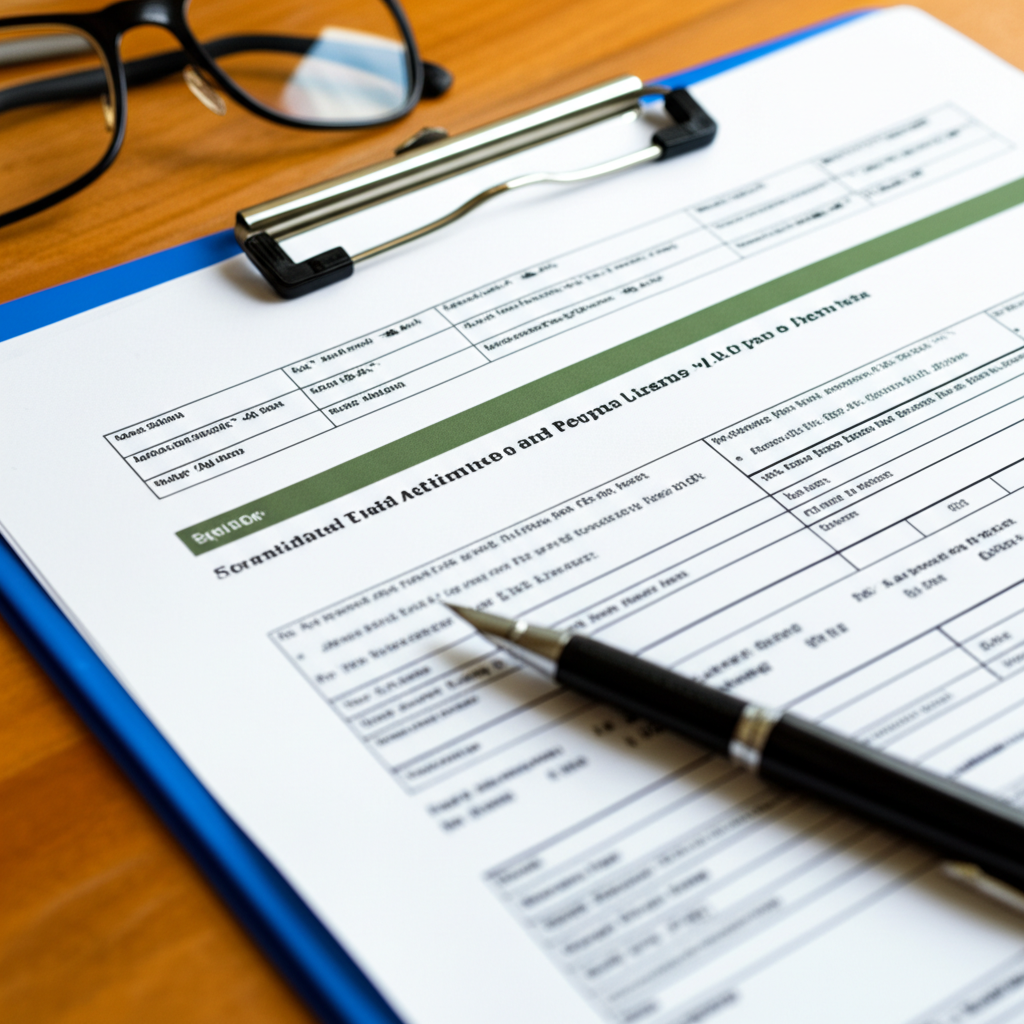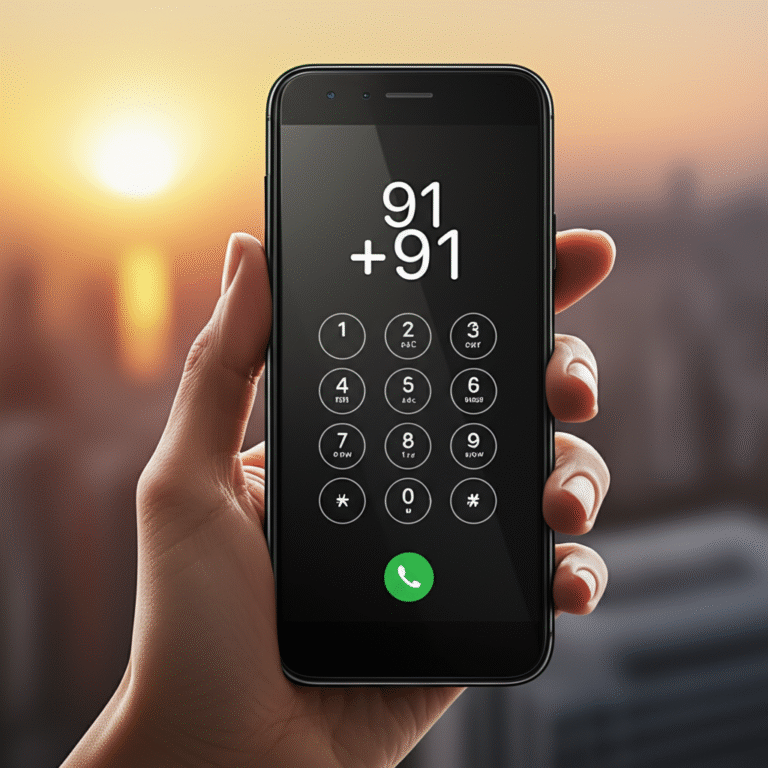How to Add Activities in Trade License: Essential Guide

Easily update your trade license by adding new business activities with this straightforward guide. Learn the simple steps to ensure your license accurately reflects your operations and keeps you compliant.
Starting or expanding a business is an exciting journey, and sometimes that means your business activities evolve. If you’ve begun offering new services or selling different products, it’s crucial to ensure your trade license reflects these changes. This might sound a bit daunting, but don’t worry! It’s a common process, and with a little guidance, you’ll find it’s quite manageable. This guide is here to walk you through exactly how to add activities to your trade license, step-by-step, in a way that’s easy to understand and follow. We’ll break down what you need to do, why it’s important, and how to navigate the process smoothly.
Why Updating Your Trade License is Important

Imagine your trade license as your business’s official ID card. It lists the specific activities your business is legally allowed to conduct. If you start doing something new that isn’t on that card, you could be operating outside your permitted scope, which can lead to a few unwelcome issues.
Firstly, there’s the matter of compliance. Regulatory bodies want to ensure businesses are operating within their designated areas for safety, taxation, and consumer protection. An outdated license means you’re not fully compliant, and this could result in fines, penalties, or even the suspension of your business operations. It’s like driving a car without the correct registration – it’s best to get it sorted!
Secondly, it affects your credibility and trustworthiness. When you’re dealing with suppliers, partners, or even potential investors, a current and accurate trade license demonstrates professionalism and transparency. It shows you’re a legitimate business that keeps its affairs in order.
Finally, it can impact your ability to access certain services or opportunities. Some banks might require an updated license for loan applications, or certain government tenders might stipulate that your license must reflect your intended scope of work. Keeping it current opens doors rather than closing them.
Understanding Your Trade License

Before we dive into the “how-to,” let’s quickly touch upon what a trade license is and what information it typically contains. A trade license is issued by local government authorities (like a municipality or a department of economic development) to permit an individual or organization to engage in any trade, business, or profession within their jurisdiction.
Key information usually found on a trade license includes:
Licensee Name: The name of the individual or company.
License Number: A unique identifier for your license.
Issuing Authority: The government body that issued the license.
Date of Issue and Expiry: When the license was granted and when it needs to be renewed.
Registered Address: The official location of the business.
Approved Business Activities: This is the crucial part for our discussion – a list of the services or products your business is authorized to offer.
The specific details and format can vary significantly depending on your country, region, and the type of business you operate. For instance, a restaurant’s trade license will look very different from a software development company’s.
Step-by-Step Guide: How to Add Activities in Trade License

Now, let’s get down to the practical steps. While the exact procedure can vary slightly based on your location, the core process generally involves these stages. Think of it as a friendly checklist to help you stay on track.
Step 1: Identify the Specific Activities You Want to Add
This might seem obvious, but it’s worth being precise. What exactly are the new services you’re offering or products you’re selling?
Be Specific: Instead of “consulting,” specify “IT consulting” or “management consulting.” Instead of “retail,” specify “online retail of clothing” or “wholesale of electronics.”
Check for Existing Categories: Sometimes, the activity you want to add might already be listed under a broader category on your current license, or it might be a standard activity that the issuing authority has pre-defined. Researching common business categories can be helpful.
Step 2: Research the Requirements of Your Local Issuing Authority
This is arguably the most important step. Every city, state, or country has its own rules and regulations. You need to find out what your specific licensing authority requires.
Visit the Official Website: Most government bodies have websites dedicated to business licensing. Look for sections like “Business Licenses,” “Trade Permits,” “Economic Development,” or “Municipal Services.”
Contact the Authority Directly: If the website isn’t clear, don’t hesitate to call or visit the office of your local trade licensing department. They are there to help you understand the process.
Look for Forms and Applications: You’ll likely need to download specific forms for amending your license or adding new activities.
Where to find this information:
Your City/Municipal Government Website: Search for “trade license” or “business license” + your city name.
Your State/Provincial Department of Commerce/Economic Development: Search for “business registration” or “license amendment” + your state/province name.
National Business Registration Portal (if applicable): Some countries have a central portal for all business-related registrations.
Example: If you are in Dubai, you would visit the website of the Department of Economic Development (DED) in Dubai. If you are in New York City, you would look at the NYC Department of Consumer and Worker Protection.
Step 3: Gather Necessary Documentation
You’ll likely need to provide supporting documents. The exact list will depend on your location and the nature of the new activities, but common requirements include:
Your Existing Trade License: A copy of your current license.
Proof of Identity: For individuals, this could be an Emirates ID, national ID card, or passport. For companies, it might be incorporation documents.
Company Registration Documents: If you have a registered company, you’ll need your trade name registration, articles of incorporation, etc.
Ejari or Tenancy Contract: Proof of your business premises address.
No Objection Certificate (NOC): Sometimes, depending on the activity and your business structure, you might need an NOC from relevant parties (e.g., if you’re changing ownership structure or adding a regulated activity).
Activity-Specific Approvals: For certain activities (e.g., food services, healthcare, financial services), you might need prior approval from specific government ministries or departments.
Application Form: The completed form for adding new activities.
Pro Tip: Make copies of everything you submit and keep the originals safe.
Step 4: Complete the Application Form
This is where you officially request the change.
Fill Out Accurately: Ensure all information is correct and matches your supporting documents. Mistakes can cause delays.
Specify New Activities Clearly: Use the exact terminology required by the licensing authority. If you’re unsure, refer back to Step 1 and Step 2.
Indicate Required Changes: Some forms might ask you to list what needs to be added, removed, or modified.
Step 5: Pay the Required Fees
There is almost always a fee associated with updating your trade license.
Fee Structure: The cost will depend on the specific activities you’re adding, the type of license, and the issuing authority.
Payment Methods: Authorities typically accept various payment methods, including online payments, bank transfers, or in-person payments.
Keep Receipts: Always obtain and keep a receipt for all payments made.
Step 6: Submit Your Application
Once your form is filled and you have all your documents and payment ready, it’s time to submit.
Online Submission: Many authorities now offer online portals for submitting applications, which is often the quickest method.
In-Person Submission: You might need to visit the licensing office to submit your documents.
Mail Submission: Some might still accept applications by mail, though this is less common and usually slower.
Step 7: Await Approval and Receive Your Updated License
After submission, your application will be reviewed by the licensing authority.
Processing Time: This can vary greatly, from a few days to several weeks, depending on the complexity of the application and the workload of the authority.
Follow-Up: If you haven’t heard back within the expected timeframe, don’t be afraid to follow up politely.
Receive Updated License: Once approved, you will receive your updated trade license, either digitally or in print. Make sure to check it thoroughly to confirm the new activities are listed correctly.
Common Scenarios and Considerations
Let’s explore some situations you might encounter and how to handle them.
Scenario 1: Adding a Related Activity
If you run a bakery and want to add coffee service, this is usually straightforward. The activities are related, and the licensing authority will likely have a clear process for this.
Action: Follow the standard steps. Be specific about “coffee shop services” or “beverage sales” in addition to “bakery.”
Scenario 2: Adding a Completely New and Unrelated Activity
If your bakery suddenly decides to offer IT support services, this is a more complex change.
Action: You might need a separate license or a significant amendment. The issuing authority will clarify if this requires a different type of license altogether or if it can be added to your existing one. You might also need approvals from different government departments.
Scenario 3: Adding a Regulated Activity
Activities like selling alcohol, providing financial advice, or operating a healthcare facility are heavily regulated.
Action: This will almost always involve more stringent checks, specific permits, and approvals from specialized regulatory bodies before you can add them to your trade license. Research these specific requirements early on.
Scenario 4: Changing the Business Name or Ownership
While not directly “adding activities,” these changes often go hand-in-hand with license updates.
Action: If you’re changing your business name or ownership, you’ll typically have to go through a full re-licensing process or a specific amendment procedure for those changes. These are usually more involved than just adding activities.
Tips for a Smooth Process
Here are a few friendly tips to help you navigate this process with ease:
Start Early: Don’t wait until the last minute. Begin the process as soon as you know you need to update your license.
Be Organized: Keep all your documents, receipts, and correspondence in a dedicated file.
Use Official Channels: Always rely on information from the official website or directly from the licensing authority. Avoid unofficial advice.
Ask Questions: If you’re unsure about anything, ask! It’s better to clarify upfront than to make mistakes.
Consider Professional Help: For complex situations or if you’re short on time, you might consider hiring a business setup consultant or a legal advisor who specializes in trade licenses. They can handle the paperwork for you.
Example: Adding Activities in Trade License (Hypothetical Scenario)
Let’s walk through a hypothetical example.
Business: “Sunny Side Up Cafe” – currently licensed for “Restaurant Services” and “Coffee Shop.”
New Activities: The owner wants to start selling pre-packaged gourmet sandwiches and offer catering services for small events.
Process:
1. Identify Activities: “Retail sale of pre-packaged food items” and “Catering services.”
2. Research Authority: The owner checks the local Municipal Licensing Department website and finds a form titled “Application for Amendment of Trade License.” They also note a fee of $150 for adding new activities.
3. Gather Docs: They prepare a copy of their current license, their ID, the tenancy contract for the cafe, and a letter from the food safety department confirming their kitchen meets standards for pre-packaged goods.
4. Complete Form: They fill out the amendment form, clearly listing “Retail sale of pre-packaged food items” and “Catering services” in the section for new activities.
5. Pay Fee: They pay the $150 fee online.
6. Submit: They upload the completed form, documents, and payment confirmation through the online portal.
7. Approval: A week later, they receive an email with their updated trade license, now including the new activities.
Frequently Asked Questions
Here are answers to some common questions beginner business owners might have.
Q1: How long does it typically take to add new activities to a trade license?
A1: The processing time can vary significantly depending on your location and the complexity of the application. It can range from a few business days to several weeks. It’s always best to check with your local licensing authority for an estimated timeframe.
Q2: What if the activity I want to add is not listed on the authority’s drop-down menu?
A2: This can happen! In such cases, you should contact the licensing authority directly. They will advise you on how to describe the activity precisely or if a specific approval process is needed. Sometimes, you might need to propose a new activity code if one doesn’t exist.
Q3: Can I operate a new activity before it’s officially added to my trade license?
A3: No, it’s generally not advisable. Operating a business activity that is not listed on your current trade license can lead to penalties, fines, or legal issues. It’s best to wait for the official approval and updated license before you start the new activity.
Q4: Do I need to renew my entire trade license if I’m just adding activities?
A4: Typically, adding activities is an amendment to your existing license, not a full renewal. However, some authorities might have specific rules, or if your renewal date is very close, they might advise you to combine the processes. Always clarify this with the issuing body.
Q5: What happens if I add activities without informing the authorities?
A5: Operating without the correct endorsements on your trade license means you are non-compliant. This can lead to significant fines upon discovery, potential business suspension, and difficulties when you eventually try to renew or amend your license.
Q6: Are there any fees involved in adding new activities?
A6: Yes, almost always. There is usually an administrative fee charged by the licensing authority for processing the amendment and issuing an updated license. The amount varies by location and the nature of the change.
Q7: Can I remove activities from my trade license?
A7: Yes, you can usually remove activities that your business is no longer conducting. This process is often similar to adding activities, involving an amendment application and potentially some fees. It’s good practice to keep your license accurate by removing inactive activities as well.
In Conclusion
Adding new activities to your trade license is a vital step in ensuring your business remains compliant, professional, and positioned for growth. While it might seem like a bureaucratic hurdle, by understanding the steps involved and preparing adequately, you can navigate this process smoothly. Remember to always consult your local licensing authority for specific requirements and to keep all your documentation in order. This proactive approach ensures your business can confidently expand its horizons and operate legally and efficiently. You’ve got this!

